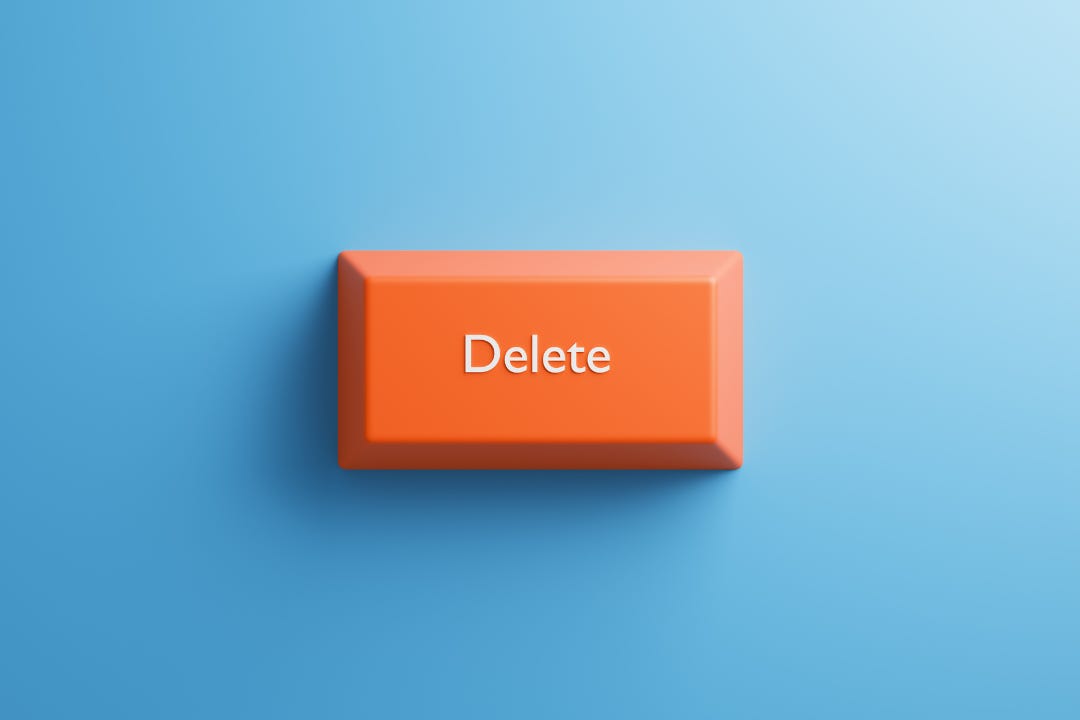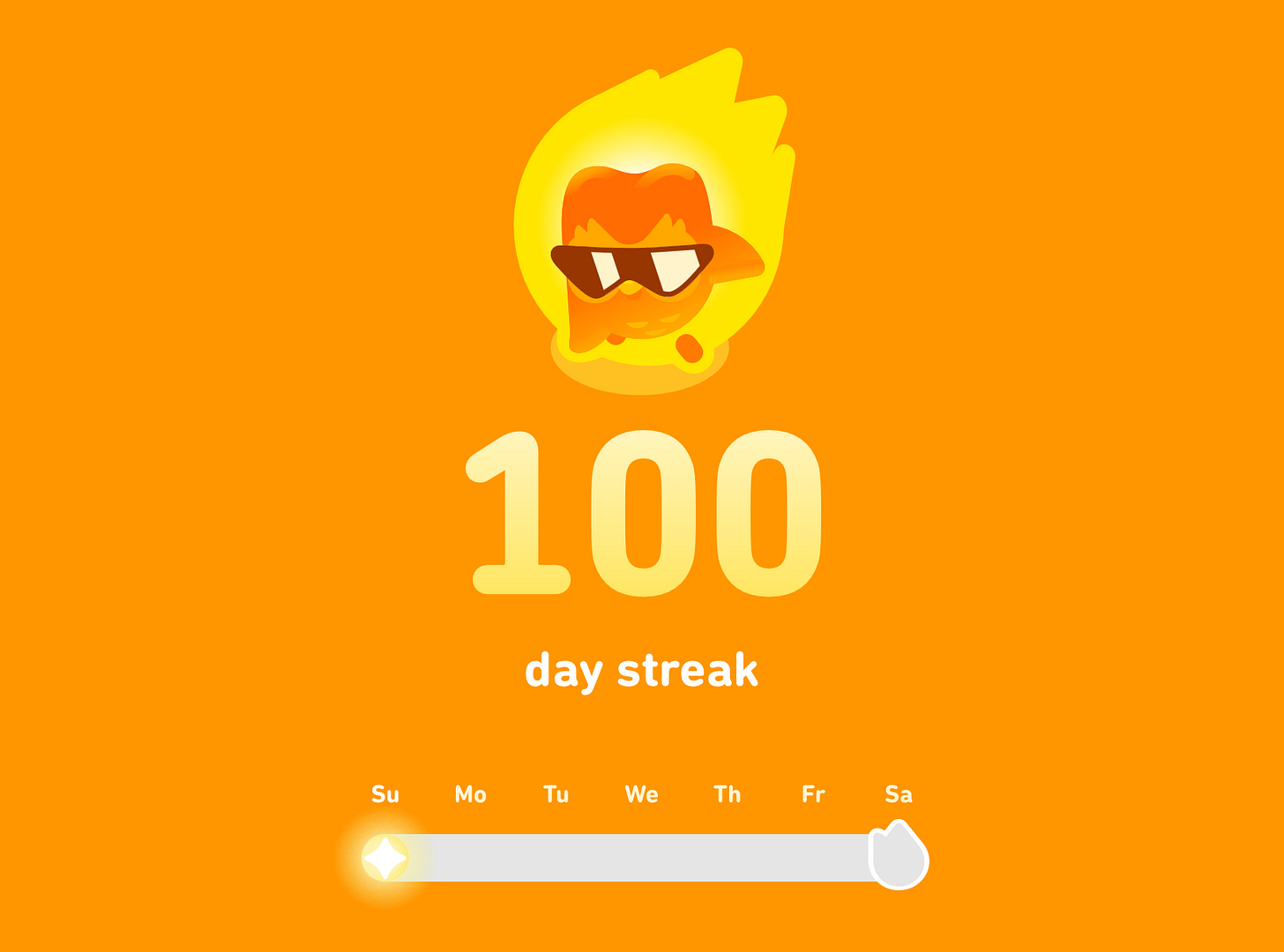I Got Rid of My "Relaxation" Time — Here's What Happened
Spoiler: I'm more productive than ever
⏱️ Reading Time: 5 Minutes
TL;DR
- Mindless rest isn’t the only option. Swapping passive activities like scrolling or TV for meaningful hobbies leaves you more energized and refreshed.
- Active rest boosts recovery. Learning a language, playing piano, or solving puzzles helps you recharge while building new skills and better conversations.
- Small changes, big results. Audit your downtime, swap passive habits for engaging ones, and reflect on the improvements in energy and mindset.On January 1st, I kicked off a little experiment.
The hypothesis was simple:
What if I took my dedicated “relaxation” time and reworked it for skill-building? Would I feel recharged and energized—or burn out and crash?
Five weeks in, I can confidently say. . .
I have no plans to go back.
When most of us think of “relaxation,” we picture someone lounging on a hammock, maybe with the sound of waves in the background.
No stress, no effort. Just stillness.
Sure, that’s one version of it. But the benefits of relaxation don’t come exclusively from being stationary or shutting off your brain. At its core, relaxation is about reducing stress and resetting your mood. And as I’ve learned, you don’t need a hammock or mindless scrolling to do that.
Today, I’m sharing the research that inspired this experiment, what I’ve learned so far, and a simple process you can use to rework your downtime (if you’re interested).
Ready? Let’s dive in.👇
It’s Time for a Change
The new year is the perfect time to reflect on your habits.
When I looked back at 2024, a few patterns jumped out. Daily habits that filled small pockets of time—30 minutes here, 40 minutes there—but when I added them up, they weren’t small at all. They took up a significant chunk of my week.
Most of these habits fell into a bucket I called “relaxation” time.
As someone who works with their brain full-time, I hit mental walls every day. I’d built in these pockets of “relaxation” to reset and recharge. My work output felt solid overall, but there was a problem:
My “relaxation” time felt like a missed opportunity.
So, I conducted a simple time audit. I started paying closer attention to when and how I was spending my downtime.
What I found fit into three key categories.
The Random Scroll:
When I hit a mental lag or had a few free minutes, my first instinct was to grab my phone. Most of the time, I’d scroll LinkedIn or flip through social media and news apps. I told myself I was keeping it light, but it rarely felt intentional.
The Afternoon Collapse:
Around the same time every afternoon, my brain would hit a wall and demand a break. I’d reach for a 20-30 minute TV session: sitcoms, sports highlights, or movie trailers.
The Evening Wind-Down:
After putting the kids to bed around 7 p.m., I’d grab the remote again. This time, it was a longer commitment—usually a movie or show for two hours. Sometimes, it was quality time with my wife or friends, but even then, it soaked up a lot of time.
The takeaway was clear: It’s time for a change.
And that’s when I remembered...
Have You Heard of “Active Rest” and “Grandma Hobbies”?
Two key concepts sprang to mind.
The first is “active rest.” Unlike passive rest—where you scroll, binge-watch, or zone out—active rest involves some form of light physical or mental activity. You’re doing something, but it’s restful, not stressful.
(The last thing any of us need is more stress.)
As a writer, I need rest from the daily output of words and ideas. But it dawned on my—that rest doesn’t have to be passive. What I really need is the outcome of rest: a fresh mind and a calmer body. I could achieve those same benefits with hobbies or activities that also helped me grow.
That’s where the second concept comes in: “grandma hobbies.”
These are the simple, old-school activities that exploded in popularity during the pandemic—knitting, gardening, baking, puzzles, and more. Researchers have long studied the calming effects of these hobbies, and they’ve found some compelling connections to mindfulness and mental well-being.
As Tiffany C. Ho, Ph.D., assistant professor of psychology at UCLA’s Brain Research Institute, puts it:
The repetitive movements and present moment awareness mimic mindfulness meditation in a lot of ways, which may explain why they could help improve mood and mental health.
With research in mind, I asked myself:
What if I swapped my passive rest for active rest and grandma hobbies?
A New Kind of Relaxation
After a little planning, here’s what I settled on:
First, I needed to tackle the random scroll—those mindless minutes spent scrolling through social media or news apps that added up to… well, nothing. My solution? Replace it with something just as easy to reach for, but far more rewarding.
Duolingo.
We’re taking a family trip to Lyon, France this summer, and I’ve always had a soft spot for the French language. So, I signed up for the Duolingo Family plan and started from the basics—oui and s’il vous plaît. Now, instead of mindlessly scrolling, I spend those spare moments making progress toward a fun, meaningful goal.
Next, the afternoon collapse. Twenty or thirty minutes of TV doesn’t sound like much, but when it’s a daily habit, those hours stack up quickly. I needed something that felt restorative but productive.
Piano.
We’ve got a family piano that’s been waiting for some attention, and I’ve been wanting to get back into it after barely touching the keys for 20+ years. I carved out my afternoon downtime for casual, calming practice using an app called Simply Piano. It’s not about becoming the next Mozart—it’s about recharging in a way that leaves me feeling more accomplished and refreshed.
Lastly, the evening wind-down. I’ll admit, I still wanted to keep watching movies with my wife, friends, and family—it’s a hobby I genuinely enjoy. But we also wanted something screen-free to mix things up.
Puzzles.
We stocked up on several new 1,000+ piece puzzles and bought a puzzle board that lets us fold up our work-in-progress so it doesn’t take over the kitchen table. About once a week, we swap out screen time for puzzle time, working on everything from desert landscapes to Harry Potter scenes.
Three new ways to rest. Three ways to recharge while making progress.
Results?
Simply put: This is one of the best productivity tweaks I’ve ever tried.
Energy
From an energy perspective, I’ve noticed a clear improvement. Instead of feeling drained or missing the passive, mindless rest I gave up, I feel recharged and driven. The best part? I’m not just resting—I’m adding meaningful skills. And because of that, my daily work feels sharper and properly fueled.
Takeaway: Active rest hasn’t robbed me of recovery time. If anything, it’s helped me recharge faster and more effectively.
Better Conversations
When my kids—five and four years old—used to come home in the afternoon, they’d often see me watching TV. We’d have the occasional chat about the game or show, but mostly, they’d just sit and watch alongside me.
Now, when they walk in, they see me playing the piano. And they’re fascinated. They come running over, asking about the song, the keys, and whether they can try. Our conversations are so much richer and more interactive.
The same thing happens with Duolingo and puzzles. My wife and I have turned them into ongoing topics of conversation—we talk about what we’re learning in French or strategize new ways to tackle the next puzzle.
Takeaway: Active rest is 10x the conversation starter that passive rest is. It turns moments of recharge into opportunities to deepen relationships and spark curiosity.
A Stronger Mindset
I feel more empowered knowing that my downtime is productive in a way that still leaves room for joy. I’m not rigid—there are still moments when I scroll or relax in a more passive way. But the small shifts I’ve made have pulled me forward, and I feel more energized to stick with these changes over the long run.
Here’s my 100-day Duolingo streak as proof:
To Wrap
We all need rest. But I’m not convinced we all need mindless rest—at least not as often as we reach for it.
By swapping mindless habits for meaningful activities, I’ve been able to recharge while making progress. Instead of zoning out and feeling sluggish afterward, I’m ending my downtime recharged, accomplished, and ready to take on what’s next.
The best part? These changes didn’t require a massive overhaul. They were small swaps that created big benefits over time.
Want to try it for yourself? Here’s a simple playbook:
Audit Your Current Downtime:
Spend a few days paying attention to when and how you’re resting. Are you scrolling, binge-watching, or zoning out? Take note of patterns and habits.Identify Small Swaps:
Find low-effort, high-reward activities that excite you. It could be a hobby you’ve always wanted to pick up or a skill you’ve put on the back burner. Think Duolingo, piano, puzzles—or any activity that feels restorative but keeps you engaged.Set Boundaries and Make It Fun:
Replace one passive rest habit at a time. Time-block your new activity. The goal is to recharge while enjoying the process.Reflect and Adjust:
Check in with yourself after a few weeks. Are you feeling recharged or overwhelmed? Adjust as needed to strike the balance between rest and productivity.
Remember: Resting isn’t about doing nothing—it’s about doing what helps you feel renewed. Find what works for you, and let it pull you forward.
Keep growing,
Stephen
P.S. Ready to dive deeper into new skills? The LinkedIn Career Content Library is packed with 390 curated resources to help you explore topics like AI, productivity, and career growth. Happy exploring!


